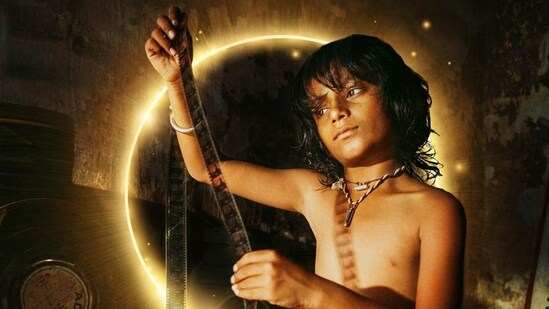Why Chhello Show is both transcendent and rooted
To my mind, what distinguishes Nalin’s cinematography is his internationalist stance that transcends the so-called burden of regional cinema.
Jubilation is in the air in Gujarat since the Film Federation of India announced its decision to send Pan Nalin’s Chhello Show or Last Film Show as India’s entry to the Academy Awards. Crafted from the director’s childhood memories of celluloid — watching a film in a local, single-screen cinema in the ancient walled town of Amreli in the Kathiawar peninsula — the film follows a young boy and his obsession with cinema and light, in a changing world. The film’s title exudes an elegiac lament, as if it was inevitable against the flow of technology erasing the past and its vestiges. At the same time, the film is playful in its use of childhood.

A standout feature of the film is its ability to evoke a certain old-timeness. Single-screen halls were not equipped with digital projection or sound systems, and therefore, Nalin used a raft of techniques to visualise this “imperfect” dreamscape of light and sound. In fact, his quest for so-called “imperfect” visual aesthetics was purely to deconstruct sharpness and extra fine pixels of digital formats like 4K which cause images to look synthetic and more perfect than the reality we live in.
Nalin and his cinematographer Swapnil S Sonawane spent a year finding vintage projectors and celluloid prints, and used Russian Lomo (Leningradskoye Optiko-Mekhanicheskoye Obyedinenie) lenses, popular in the 1980s and 90s, on two digital Alexa SX-T cameras. “In short, we married the digital camera with the lens used for celluloid,” Nalin tells me. The sound recordist Hari M Nair, who worked along with two foreign experts, told me about the care Nalin took to create the deep sonic environment for the film. This made Chhello Show, at its core, an elemental film, which is unusual for most other contemporary Gujarati films that generally veer towards stories of the urbane. Its actors, the debutant children, provide the film with its ebullient-innocent spine. The lead boy is aptly named Samaya (time).
Gujarati film traditions may be old but only a handful of films have touched the national consciousness. One such as Ketan Mehta’s much acclaimed Bhavni Bhavai (narrating the story of a Dalit couple fighting against injustice) and another was the 1992 satire Hun Hunshi Hunshilal (I am Hunshilal). There was a lull since, but two films — Gyan Correa’s 2014 film, The Good Road, which was also sent as India’s official entry to the Oscars, and Abhishek Shah’s 2019 feature, Hellaro — have since resuscitated the industry to some extent and the interest of film watchers. The latter film, a folk story featuring popular local songs, was also a commercial success while winning the National Award for best film in any language.
To my mind, what distinguishes Nalin’s cinematography is his internationalist stance that transcends the so-called burden of regional cinema. Yes, contemporary Gujarati cinema is on the rise, but it is also becoming more urban in both its storytelling and subject treatment. Thanks to digital technology, there has been a quantum jump in the production of films. The post-Hunshilal Gujarati cinema in the digital age had acquired visible technical finesse and attracted the Gujarati diaspora community largely in the United States. Rural narratives have receded, limited to tales about Robinhood-type characters, deities and myths. Nevertheless, there are not many unusual sparks in the cinematographic sensibility of Gujarati cinema today. Chhello Show might bring about a paradigm shift.
The success of Nalin’s film makes us confront the question — what makes a regional film today, location or language? After all, none of the lead actors in Bhavni Bhavai were Gujarati. Neither was any member of the leading cast in Hun Hunshi Hunshilal. Their predecessor, Kantilal Rathod’s 1969 hit Kanku, saw its lead actor Pallavi Mehta win an award in Chicago. I argue that over the years, the distinction between regional and mainstream cinema has become only marginal, and exists in the “language” of the work or location, not in its overall ethos. Somewhere on this complex loom of time, Chhello Show transcends regionalist boundaries, and yet, remains rooted because of the director’s deep intellectual-emotional investment. In the film, the lead character talks about how “stories become films” and the “future belongs to storytellers”, but so did the past. You can listen to the lion’s roar from neighbouring Sasan Gir and the ringing laughter of a Siddi boy, all reverberating against the backdrop of Amreli’s single-screen Galaxy cinema, struggling to hold its last show.
Amrit Gangar is a Mumbai-based film theorist, curator, historian and cultural activist
The views expressed are personal
Continue reading with HT Premium Subscription




